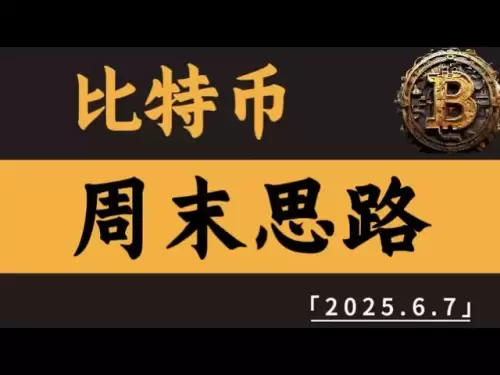-
 Bitcoin
Bitcoin $104,893.8372
1.29% -
 Ethereum
Ethereum $2,487.9783
0.99% -
 Tether USDt
Tether USDt $1.0007
0.00% -
 XRP
XRP $2.1821
2.20% -
 BNB
BNB $648.8341
1.07% -
 Solana
Solana $152.2806
3.07% -
 USDC
USDC $0.9999
-0.01% -
 Dogecoin
Dogecoin $0.1850
5.47% -
 TRON
TRON $0.2787
0.92% -
 Cardano
Cardano $0.6682
4.23% -
 Hyperliquid
Hyperliquid $33.7995
-3.00% -
 Sui
Sui $3.2820
8.18% -
 Chainlink
Chainlink $14.0366
6.39% -
 Avalanche
Avalanche $20.7143
6.65% -
 UNUS SED LEO
UNUS SED LEO $9.0639
2.58% -
 Stellar
Stellar $0.2657
1.88% -
 Bitcoin Cash
Bitcoin Cash $407.4733
5.23% -
 Toncoin
Toncoin $3.1897
2.68% -
 Shiba Inu
Shiba Inu $0.0...01280
4.25% -
 Hedera
Hedera $0.1689
2.63% -
 Litecoin
Litecoin $88.2798
4.96% -
 Polkadot
Polkadot $4.0264
3.61% -
 Monero
Monero $325.7094
2.41% -
 Ethena USDe
Ethena USDe $1.0014
0.03% -
 Bitget Token
Bitget Token $4.6644
0.03% -
 Dai
Dai $1.0001
0.00% -
 Pepe
Pepe $0.0...01149
3.68% -
 Pi
Pi $0.6257
1.28% -
 Uniswap
Uniswap $6.1631
2.61% -
 Aave
Aave $253.5629
1.61%
Is the W bottom pattern of RSI reliable? How to improve the accuracy of judgment?
The W bottom pattern on RSI is a bullish reversal signal, but traders should use additional indicators and analyze multiple timeframes to improve its reliability.
May 24, 2025 at 10:56 am
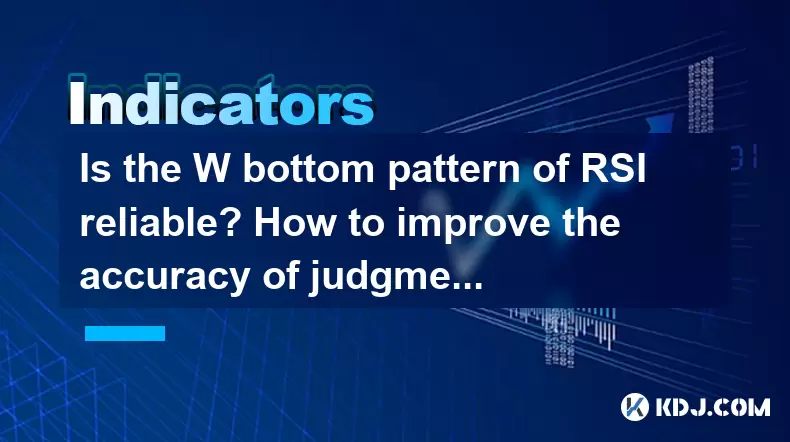
The W bottom pattern on the Relative Strength Index (RSI) is a popular technical analysis tool used by many cryptocurrency traders to identify potential trend reversals. This pattern is characterized by two distinct lows that resemble the letter "W" on the RSI chart. But how reliable is this pattern, and what steps can traders take to improve the accuracy of their judgments? Let's delve into these questions in detail.
Understanding the W Bottom Pattern on RSI
The W bottom pattern is considered a bullish reversal pattern. It typically forms after a downtrend and signals that the selling pressure might be weakening, potentially leading to a bullish trend. The pattern consists of two lows that are roughly at the same level, with a peak in between. The confirmation of this pattern occurs when the RSI breaks above the peak between the two lows.
The first low in the W pattern represents the initial point where bearish momentum starts to wane. After this low, the RSI rises to a peak, which often corresponds to a minor price rally. The second low is crucial; it should be at or near the level of the first low. If the RSI then breaks above the peak between the two lows, it is considered a confirmation of the W bottom pattern, suggesting a potential bullish reversal.
Reliability of the W Bottom Pattern
The reliability of the W bottom pattern can vary depending on several factors, including market conditions, the timeframe being analyzed, and the specific cryptocurrency in question. Generally, the pattern is considered more reliable when it appears on longer timeframes such as daily or weekly charts, as these tend to filter out short-term noise and provide more significant trend signals.
In volatile markets, the W bottom pattern may appear more frequently, but its reliability can be lower due to the increased likelihood of false signals. Conversely, in more stable market conditions, the pattern may be rarer but potentially more reliable. It's also important to consider the overall trend of the cryptocurrency; a W bottom pattern that forms against the prevailing downtrend may be less reliable than one that forms after a period of consolidation or a minor uptrend.
Improving the Accuracy of Judgment
To improve the accuracy of identifying and acting on the W bottom pattern, traders can employ several strategies and additional indicators. Here are some key methods:
Combining with Price Action
One effective way to increase the reliability of the W bottom pattern is to confirm it with price action. Look for bullish candlestick patterns, such as hammer or engulfing patterns, around the second low of the W. If the price action supports the RSI pattern, the signal becomes stronger.
- Observe the price chart: Look for signs of bullish reversal, such as a bullish engulfing pattern or a hammer candlestick, around the second low of the W pattern.
- Check for volume: Higher trading volume around the second low can indicate stronger buying interest, further supporting the potential for a bullish reversal.
Using Additional Indicators
Incorporating other technical indicators can help validate the W bottom pattern and improve the accuracy of your trading decisions. Some popular indicators to consider include:
- Moving Averages: A bullish crossover of shorter-term moving averages over longer-term ones around the second low can confirm the W bottom pattern.
- MACD (Moving Average Convergence Divergence): A bullish crossover in the MACD, especially when it occurs near the second low, can reinforce the signal from the W bottom pattern.
- Support and Resistance Levels: If the second low of the W pattern coincides with a significant support level, it increases the likelihood of a successful bullish reversal.
Timeframe Analysis
Analyzing the W bottom pattern across multiple timeframes can provide a more comprehensive view and help filter out false signals. For example, if the pattern appears on both daily and hourly charts, it may be a more robust signal than if it only appears on one timeframe.
- Start with a longer timeframe: Identify the W bottom pattern on a daily or weekly chart to get a broad view of the trend.
- Zoom into shorter timeframes: Once a potential W bottom is identified on a longer timeframe, check for confirmation on shorter timeframes like 4-hour or 1-hour charts.
Backtesting and Historical Data
Backtesting the W bottom pattern using historical data can help traders understand its performance in different market conditions and refine their trading strategies. By analyzing past occurrences of the pattern, traders can identify common pitfalls and improve their ability to distinguish between reliable and false signals.
- Collect historical data: Use trading platforms or financial data providers to gather historical price and RSI data for the cryptocurrency in question.
- Identify past W bottom patterns: Mark instances where the W bottom pattern occurred and note the subsequent price action.
- Analyze performance: Calculate the success rate of the pattern and identify factors that influenced its reliability, such as market volatility or the presence of other indicators.
Practical Example of Identifying the W Bottom Pattern
To illustrate how to identify and confirm the W bottom pattern, let's walk through a hypothetical example using Bitcoin (BTC).
Step-by-Step Identification
- Identify the downtrend: Start by observing the price chart of Bitcoin and noting a clear downtrend.
- Locate the first low: Look at the RSI and identify the first low, which should be around the 30 level, indicating oversold conditions.
- Observe the peak: After the first low, the RSI rises to a peak, which might correspond to a minor price rally.
- Locate the second low: The second low should be at or near the level of the first low, again around the 30 level.
- Confirm the pattern: The W bottom pattern is confirmed when the RSI breaks above the peak between the two lows.
Additional Confirmation
- Check price action: Around the second low, look for bullish candlestick patterns such as a hammer or a bullish engulfing pattern.
- Use additional indicators: Confirm the pattern with other indicators like moving averages or MACD.
- Analyze multiple timeframes: Ensure the pattern is visible and confirmed on both daily and shorter timeframes like 4-hour charts.
Frequently Asked Questions
Q1: Can the W bottom pattern be used for short-term trading?
Yes, the W bottom pattern can be used for short-term trading, but it's generally more reliable on longer timeframes. For short-term trades, it's crucial to combine the pattern with other indicators and consider the overall market context to reduce the risk of false signals.
Q2: How does market volatility affect the reliability of the W bottom pattern?
High market volatility can increase the frequency of W bottom patterns but also raises the risk of false signals. In volatile markets, it's important to use additional confirmation methods, such as price action and other technical indicators, to enhance the reliability of the pattern.
Q3: Is the W bottom pattern more reliable on certain cryptocurrencies?
The reliability of the W bottom pattern can vary across different cryptocurrencies due to factors like liquidity and market sentiment. Generally, more liquid and widely traded cryptocurrencies like Bitcoin and Ethereum may exhibit more reliable patterns compared to less liquid altcoins.
Q4: Can the W bottom pattern be used in conjunction with other reversal patterns?
Yes, combining the W bottom pattern with other reversal patterns, such as double bottoms or head and shoulders, can provide a more robust signal. By confirming the W bottom with additional patterns, traders can increase their confidence in the potential for a bullish reversal.
Disclaimer:info@kdj.com
The information provided is not trading advice. kdj.com does not assume any responsibility for any investments made based on the information provided in this article. Cryptocurrencies are highly volatile and it is highly recommended that you invest with caution after thorough research!
If you believe that the content used on this website infringes your copyright, please contact us immediately (info@kdj.com) and we will delete it promptly.
- Ethereum (ETH) Just Flipped Key Support—Is a $2,000 Breakout Inevitable?
- 2025-06-07 15:50:17
- President Donald Trump’s meme coin is already a thing that shouldn't exist
- 2025-06-07 15:50:17
- XRP price prediction: Will the new CME futures contract push the token to new highs?
- 2025-06-07 15:45:13
- USD1, the US dollar stablecoin launched by World Liberty Financial (WLFI) and backed by President Donald Trump, has quickly climbed the rankings
- 2025-06-07 15:45:13
- Jovita Idar American Women Quarter Wins Best Circulating Coin or Coin Series at the 32nd Mint Directors Conference
- 2025-06-07 15:40:13
- Swirl Launches as the First Liquid Staking Solution on IOTA's DeFi Ecosystem
- 2025-06-07 15:40:12
Related knowledge
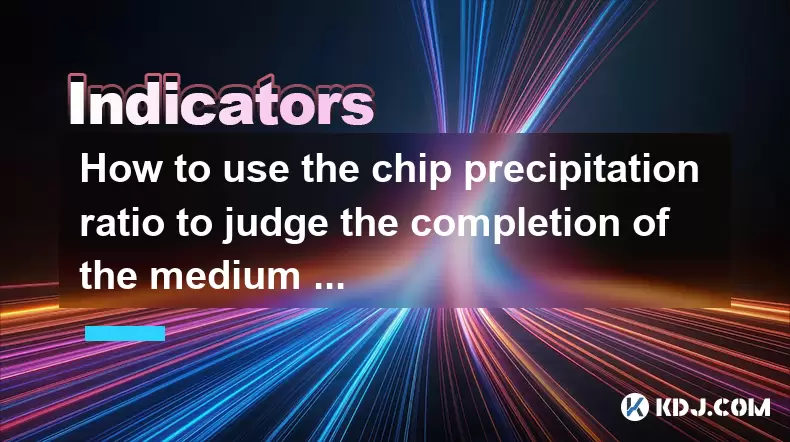
How to use the chip precipitation ratio to judge the completion of the medium and long-term bottom construction?
Jun 04,2025 at 03:36am
The chip precipitation ratio is a crucial metric used by investors to assess the accumulation of chips (or shares) at different price levels over time. This ratio helps in understanding the distribution of chips and can be a powerful tool for determining the completion of medium and long-term bottom construction in the cryptocurrency market. By analyzin...
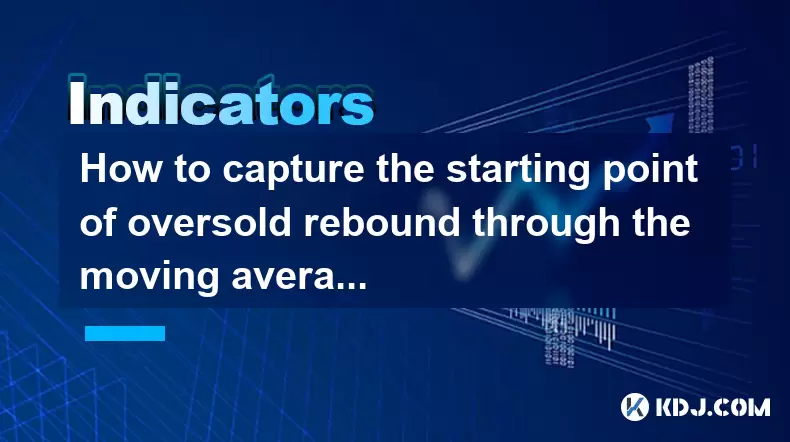
How to capture the starting point of oversold rebound through the moving average gravity reversal strategy?
Jun 04,2025 at 01:01pm
The moving average gravity reversal strategy is a sophisticated approach used by traders to identify potential entry points for buying cryptocurrencies when they are considered oversold. This strategy leverages the concept of moving averages to pinpoint moments when a cryptocurrency might be poised for a rebound. In this article, we will delve into the ...
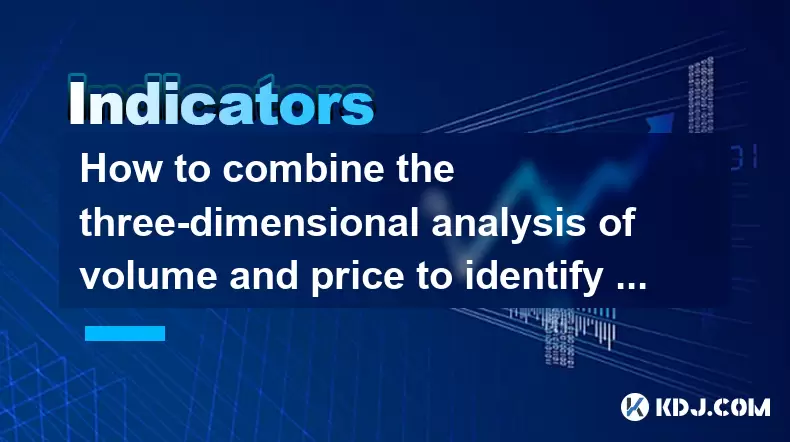
How to combine the three-dimensional analysis of volume and price to identify the golden buying point of breakthrough and retracement?
Jun 03,2025 at 11:42pm
In the dynamic world of cryptocurrencies, identifying the optimal buying points is crucial for maximizing profits and minimizing risks. One effective method to achieve this is by combining three-dimensional analysis of volume and price to pinpoint the golden buying points during breakouts and retracements. This article will delve into how to use this ap...
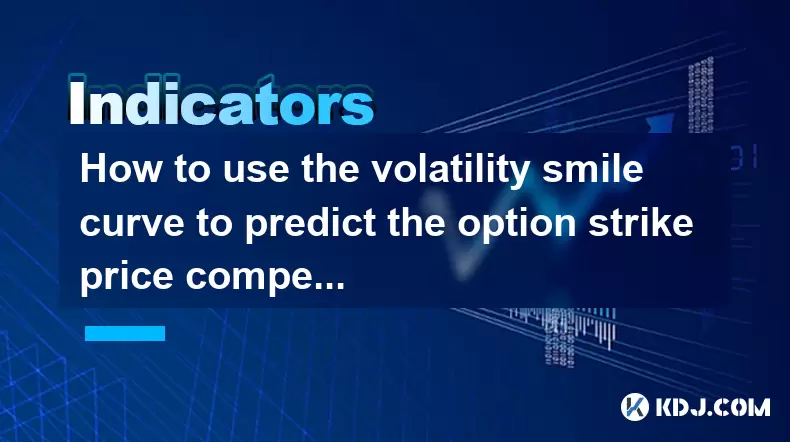
How to use the volatility smile curve to predict the option strike price competition area?
Jun 06,2025 at 01:01pm
The volatility smile curve is a graphical representation that shows the implied volatility of options across different strike prices for a given expiration date. It is called a 'smile' because the curve often takes the shape of a smile, with higher implied volatilities for options that are deep in-the-money or deep out-of-the-money, and lower implied vo...
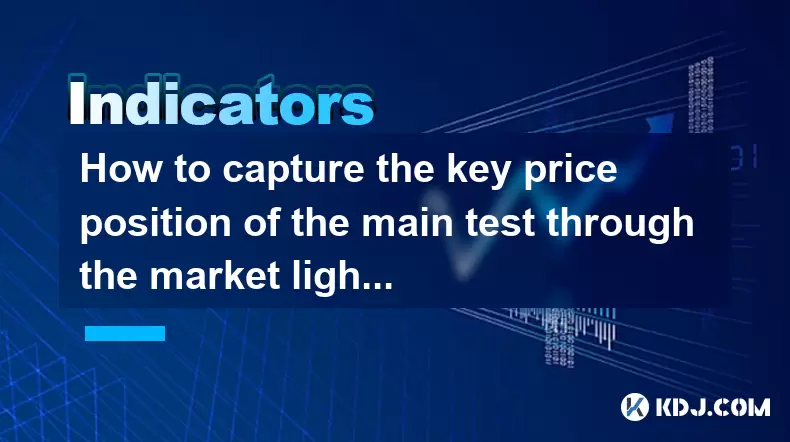
How to capture the key price position of the main test through the market lightning chart?
Jun 02,2025 at 06:07pm
Introduction to Market Lightning ChartThe market lightning chart is a powerful tool used by cryptocurrency traders to visualize price movements and identify key price positions. This chart type provides a detailed view of market activity, allowing traders to spot trends, reversals, and other significant price levels quickly. By understanding how to use ...
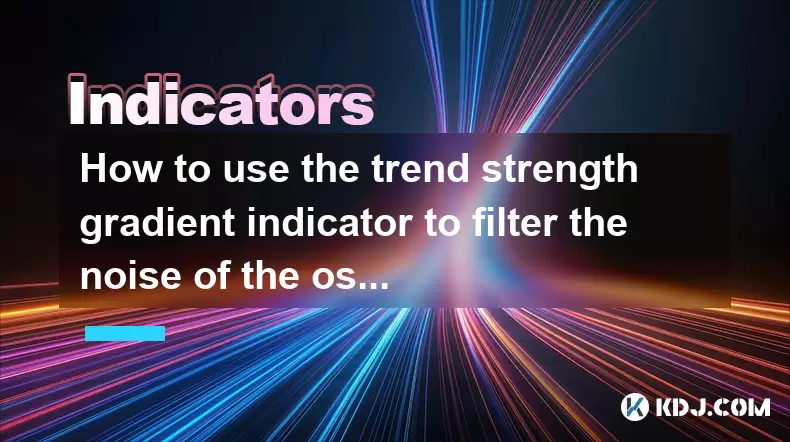
How to use the trend strength gradient indicator to filter the noise of the oscillating market?
Jun 06,2025 at 06:15pm
The trend strength gradient indicator is a powerful tool used by cryptocurrency traders to analyze market trends and filter out the noise that often accompanies oscillating markets. This indicator helps traders identify the strength of a trend, enabling them to make more informed decisions. In this article, we will explore how to effectively use the tre...

How to use the chip precipitation ratio to judge the completion of the medium and long-term bottom construction?
Jun 04,2025 at 03:36am
The chip precipitation ratio is a crucial metric used by investors to assess the accumulation of chips (or shares) at different price levels over time. This ratio helps in understanding the distribution of chips and can be a powerful tool for determining the completion of medium and long-term bottom construction in the cryptocurrency market. By analyzin...

How to capture the starting point of oversold rebound through the moving average gravity reversal strategy?
Jun 04,2025 at 01:01pm
The moving average gravity reversal strategy is a sophisticated approach used by traders to identify potential entry points for buying cryptocurrencies when they are considered oversold. This strategy leverages the concept of moving averages to pinpoint moments when a cryptocurrency might be poised for a rebound. In this article, we will delve into the ...

How to combine the three-dimensional analysis of volume and price to identify the golden buying point of breakthrough and retracement?
Jun 03,2025 at 11:42pm
In the dynamic world of cryptocurrencies, identifying the optimal buying points is crucial for maximizing profits and minimizing risks. One effective method to achieve this is by combining three-dimensional analysis of volume and price to pinpoint the golden buying points during breakouts and retracements. This article will delve into how to use this ap...

How to use the volatility smile curve to predict the option strike price competition area?
Jun 06,2025 at 01:01pm
The volatility smile curve is a graphical representation that shows the implied volatility of options across different strike prices for a given expiration date. It is called a 'smile' because the curve often takes the shape of a smile, with higher implied volatilities for options that are deep in-the-money or deep out-of-the-money, and lower implied vo...

How to capture the key price position of the main test through the market lightning chart?
Jun 02,2025 at 06:07pm
Introduction to Market Lightning ChartThe market lightning chart is a powerful tool used by cryptocurrency traders to visualize price movements and identify key price positions. This chart type provides a detailed view of market activity, allowing traders to spot trends, reversals, and other significant price levels quickly. By understanding how to use ...

How to use the trend strength gradient indicator to filter the noise of the oscillating market?
Jun 06,2025 at 06:15pm
The trend strength gradient indicator is a powerful tool used by cryptocurrency traders to analyze market trends and filter out the noise that often accompanies oscillating markets. This indicator helps traders identify the strength of a trend, enabling them to make more informed decisions. In this article, we will explore how to effectively use the tre...
See all articles


























